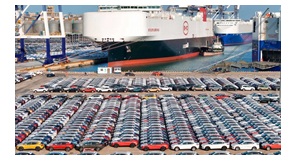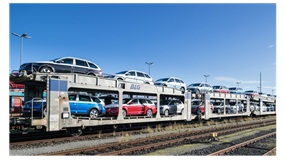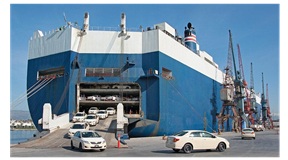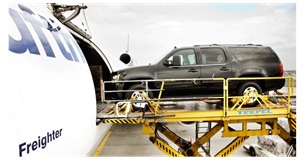Car Transport: Services, Methods, and Key Considerations
 Car transport is an essential service for individuals, businesses, and industries worldwide. Whether relocating, purchasing a vehicle online, or transporting a fleet of cars, car shipping plays a crucial role in the automotive and logistics sectors. This extensive guide explores the different types of car transport services, the methods used, key considerations, and tips for choosing the right car transport company.
Car transport is an essential service for individuals, businesses, and industries worldwide. Whether relocating, purchasing a vehicle online, or transporting a fleet of cars, car shipping plays a crucial role in the automotive and logistics sectors. This extensive guide explores the different types of car transport services, the methods used, key considerations, and tips for choosing the right car transport company.
What is Car Transport?
Car transport refers to the process of moving a vehicle from one location to another, typically over long distances. The service is used by individuals, manufacturers, car dealerships, and rental companies to ship vehicles safely and efficiently. Car transport services can be domestic (within a single country) or international, depending on the origin and destination of the vehicle.
Types of Car Transport Services
There are several options available when it comes to car transport, each with its own advantages and disadvantages. The right choice depends on factors such as the type of vehicle, destination, budget, and level of protection required.
- Open-Air Transport
-
 Open-air transport is one of the most popular and affordable options for car shipping. In this method, vehicles are transported on open-air trailers or carriers. Advantages: Cost-effective compared to enclosed transport. Widely available, making it easy to find a service provider. Suitable for standard vehicles and short to medium-distance shipping. Disadvantages: Less protection from environmental factors like weather, dirt, and road debris. Not ideal for luxury, classic, or high-value vehicles.
Open-air transport is one of the most popular and affordable options for car shipping. In this method, vehicles are transported on open-air trailers or carriers. Advantages: Cost-effective compared to enclosed transport. Widely available, making it easy to find a service provider. Suitable for standard vehicles and short to medium-distance shipping. Disadvantages: Less protection from environmental factors like weather, dirt, and road debris. Not ideal for luxury, classic, or high-value vehicles.
- Enclosed Transport
-
 Enclosed transport involves shipping vehicles in fully enclosed carriers, offering complete protection from the elements and road hazards. This method is often chosen for high-value or rare cars. Advantages: Maximum protection against weather, dirt, and road debris. Increased security, particularly for high-end or exotic vehicles. Ideal for luxury, vintage, or classic cars. Disadvantages: Higher cost than open-air transport due to the added protection. Limited availability depending on the transport company.
Enclosed transport involves shipping vehicles in fully enclosed carriers, offering complete protection from the elements and road hazards. This method is often chosen for high-value or rare cars. Advantages: Maximum protection against weather, dirt, and road debris. Increased security, particularly for high-end or exotic vehicles. Ideal for luxury, vintage, or classic cars. Disadvantages: Higher cost than open-air transport due to the added protection. Limited availability depending on the transport company.
- Door-to-Door Transport
-
 Door-to-door transport is a convenient service where the transport company picks up and delivers the vehicle directly from and to the specified addresses, often including residential locations. Advantages: Maximum convenience, as the vehicle is picked up and dropped off at your doorstep. Saves time and effort compared to terminal-to-terminal transport. Disadvantages: Higher cost due to the convenience factor. Potential limitations on accessibility for certain locations (e.g., narrow streets or areas with limited access).
Door-to-door transport is a convenient service where the transport company picks up and delivers the vehicle directly from and to the specified addresses, often including residential locations. Advantages: Maximum convenience, as the vehicle is picked up and dropped off at your doorstep. Saves time and effort compared to terminal-to-terminal transport. Disadvantages: Higher cost due to the convenience factor. Potential limitations on accessibility for certain locations (e.g., narrow streets or areas with limited access).
- Terminal-to-Terminal Transport
-
 With terminal-to-terminal transport, the vehicle is dropped off at a designated terminal or depot and picked up at another terminal at the destination. This method is typically more affordable than door-to-door transport. Advantages: More cost-effective than door-to-door transport. Suitable for clients who are flexible with the pick-up and delivery locations. Disadvantages: Less convenient, as it requires both the pickup and delivery to occur at a specific terminal. May involve more time and effort for the customer.
With terminal-to-terminal transport, the vehicle is dropped off at a designated terminal or depot and picked up at another terminal at the destination. This method is typically more affordable than door-to-door transport. Advantages: More cost-effective than door-to-door transport. Suitable for clients who are flexible with the pick-up and delivery locations. Disadvantages: Less convenient, as it requires both the pickup and delivery to occur at a specific terminal. May involve more time and effort for the customer.
Methods of Car Transport
Car transport services use a range of methods to move vehicles, depending on the distance, type of car, and preferred shipping speed.
- Road Transport
-
 Road transport is the most common method for domestic car shipping. It involves using trucks, flatbeds, or car carriers to transport vehicles from one location to another. Road transport is available in both open-air and enclosed configurations. Used for: Local, regional, and national car shipping. Advantages: Flexible and accessible, with direct routes and minimal handling of the vehicle. Disadvantages: Limited for international shipping, especially for long-distance destinations.
Road transport is the most common method for domestic car shipping. It involves using trucks, flatbeds, or car carriers to transport vehicles from one location to another. Road transport is available in both open-air and enclosed configurations. Used for: Local, regional, and national car shipping. Advantages: Flexible and accessible, with direct routes and minimal handling of the vehicle. Disadvantages: Limited for international shipping, especially for long-distance destinations.
- Rail Transport
-
 Rail transport is often used for long-distance or international car shipping, particularly in regions with an extensive rail network. It is usually cheaper than shipping by road, but it requires additional logistics to deliver the car to the final destination. Used for: Long-distance or international shipments. Advantages: Cost-effective, energy-efficient, and good for bulk shipments. Disadvantages: Limited availability depending on the region and less direct than road transport.
Rail transport is often used for long-distance or international car shipping, particularly in regions with an extensive rail network. It is usually cheaper than shipping by road, but it requires additional logistics to deliver the car to the final destination. Used for: Long-distance or international shipments. Advantages: Cost-effective, energy-efficient, and good for bulk shipments. Disadvantages: Limited availability depending on the region and less direct than road transport.
- Sea Transport
-
 Sea transport is commonly used for international car shipping, especially when vehicles need to be shipped overseas. Vehicles are often loaded onto Roll-on/Roll-off (RoRo) vessels or container ships for transport. Used for: International shipping, especially to and from overseas markets. Advantages: Ideal for overseas shipments and bulk transport. Disadvantages: Longer transit times, potential for delays, and additional logistics for pickup and delivery.
Sea transport is commonly used for international car shipping, especially when vehicles need to be shipped overseas. Vehicles are often loaded onto Roll-on/Roll-off (RoRo) vessels or container ships for transport. Used for: International shipping, especially to and from overseas markets. Advantages: Ideal for overseas shipments and bulk transport. Disadvantages: Longer transit times, potential for delays, and additional logistics for pickup and delivery.
- Air Transport
-
 Air transport is the fastest method of car shipping, but it is also the most expensive. It is used for shipping luxury, exotic, or high-priority vehicles when time is a critical factor. Used for: High-value or time-sensitive shipments. Advantages: Fastest shipping option. Disadvantages: Extremely costly, limited to high-end or urgent shipments.
Air transport is the fastest method of car shipping, but it is also the most expensive. It is used for shipping luxury, exotic, or high-priority vehicles when time is a critical factor. Used for: High-value or time-sensitive shipments. Advantages: Fastest shipping option. Disadvantages: Extremely costly, limited to high-end or urgent shipments.
Key Considerations for Car Transport
When choosing a car transport service, there are several factors to consider to ensure the safety and reliability of the shipment:
- Cost
- The cost of car transport varies depending on several factors, including the type of transport, distance, vehicle size, and any additional services. Open-air transport is generally more affordable, while enclosed transport comes at a premium.
- Delivery Time
- Shipping time depends on the distance, method of transport, and the route taken. While road transport is often quicker for domestic shipments, international transport (especially by sea or air) can take several weeks.
- Insurance
- Ensure that the transport company provides adequate insurance coverage for the vehicle during transit. Most companies offer basic coverage, but additional coverage can often be purchased for extra peace of mind.
- Vehicle Condition
- Before shipping your car, inspect it for existing damage and take detailed notes or photographs. This can help resolve any issues in case of damage during transport.
- Reputation and Reviews
- Research the reputation of the transport company by checking reviews, testimonials, and industry ratings. Choose a company with a track record of safe and reliable service.
How to Prepare Your Vehicle for Transport
Proper preparation can help avoid delays and ensure your car is transported safely. Here are some steps to follow:
- Clean the Vehicle:
- A clean car makes it easier to spot any pre-existing damage.
- Remove Personal Items:
- Most transport companies do not allow personal items in the car for safety reasons.
- Check for Leaks:
- Ensure that the car is in good working condition, with no fluid leaks.
- Disable Alarm Systems:
- If your vehicle has an alarm system, disable it to prevent accidental activation during transport.
- Ensure Enough Gas:
- Have enough gas in the car (usually about a quarter tank) for loading and unloading, but avoid a full tank to minimize weight.
Conclusion
Car transport is an essential service for moving vehicles across long distances, whether domestically or internationally. By understanding the various transport methods, services, and key considerations, you can make an informed decision on the best way to ship your vehicle. Whether you’re shipping a personal car, moving across countries, or transporting high-value vehicles, selecting the right car shipping company ensures a smooth and safe transport process. Always research and choose a reputable company with the experience, insurance options, and customer service you need for a stress-free experience.
eXus Dev